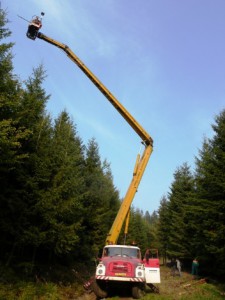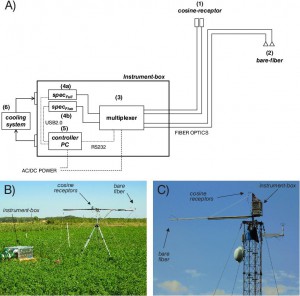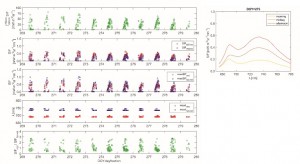FIELD SPECTROSCOPY AND CAL/VAL ACTIVITIES
Hyperspectral remote sensing plays a primary role in Earth observations, as it enables better quantifying of important bio- and geophysical parameters and the monitoring of Earth’s dynamic processes. In support of future satellite missions, airborne and field spectroscopy measurements are fundamental, offering valuable data to consolidate the technical components of various instruments, algorithm prototyping and better understanding of the link between optical signals, parameters and processes at different observational scales
The last decade has experienced unprecedented expansion in the area of automatic field spectroradiometers for unattended (unsupervised) measurement of vegetation through experimental use of various instruments and configurations. The main goal of these activities is to develop efficient and multi-scale system sampling systems for monitoring the optical properies of the ecosystems (i.e. reflected and emitted domains).
For more information see:
OPTIMISE – Innovative Optical Tools for Proximal Sensing of Ecophysiological Processes

Measurement set up for cal/val using ASD instruments

Measurements taken from a cherry picker over the forest canopy during the ESA HyFLEX Campaign
New! Accepted paper on the comparison of SIF from different Field Spectroradiometers (Julitta et al., 2016).
New! Accepted paper on MRI (Cogliati et al., 2015). A novel automated field spectroradiometer capable of collecting unattended, continuous, long-term hyperspectral measurements.

Schematic drawing of the automated field spectroradiometers

Temporal dynamics of total fluorescence radiance emission and fluorescence indices derived from continuos spectroradiometric systems at Duke Forest (North Carolina) during the FLEX-US Project
8,381 total views, 2 views today
